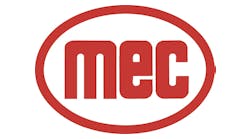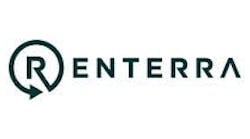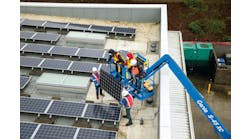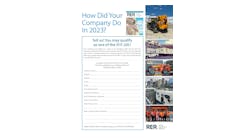GREENWICH, Conn. — United Rentals posted a 57.8-percent total revenue increase and a 61.3-percent rental volume jump, incorporating revenue from the former RSC Equipment Rentals from the date the acquisition of RSC was finalized on April 30. Total rentals was $993 million for the quarter compared with $629 million in the second quarter of 2011; rental revenue was $845 million, compared with $524 million in the year-ago quarter.
The Future of OEMs and the Distribution Model: Is Rental the AnswerOn a GAAP basis, United reported a second-quarter 2012 loss from continued share for the same period in 2011. The loss reflects significant merger and restructuring-related costs associated with the RSC acquisition.
Adjusted EBITDA was $418 million and adjusted EBITDA margin was 42.1 percent for the second quarter of 2012, an increase of $197 million and 700 basis points compared with Q211. The size of the company’s fleet increased by $3.26 billion since year-end 2011, on an original equipment cost basis, and was 64.2-percent larger on average in the second quarter compared to the year-ago period.
“Our strong results in the second quarter were driven by several positive factors that should continue to benefit our performance,” said Michael Kneeland, United Rentals CEO. “Our end markets are more robust than a year ago, and we see a growing customer appreciation for the economic value of renting equipment. In addition, we capitalized on our enhanced market position following the acquisition of RSC, particularly in the industrial sector. The integration is very much on track: we have already brought the RSC operations onto our technology platform, aligned our sales force territories, and completed 61 of 185 branch consolidations. Our cost synergies are tracking ahead of target.”
Kneeland added that the macro environment is still difficult to forecast and that the company is keeping a close watch on end market indicators. “Nevertheless, we like what we’re hearing from our customers,” he said. “The higher rates and volume we achieve in the second quarter reflect continued demand for our equipment. Our customers remain confident in their outlook, and we feel comfortable with our financial targets for 2012. Our model provides us with the flexibility to address changes in economic circumstances.”
United Rentals expects an increase in rental rates of about 6.5 percent year over year on a pro-forma basis for the full year of 2012, with time utilization of about 68 percent. The company expects net rental capital expenditures of between $1.075 billion and $1.125 billion, after gross purchases of between $1.5 billion and $1.6 billion.
Since the acquisition of RSC, the company has also implemented CORE price optimization software in all legacy RSC branches and completed sales force integration of national and strategic accounts. United is also raising its 2012 realized cost synergy target from $70 million to $80 million, and targeting revenue synergies of $50 million.
For the first six months of 2012, United reported total revenue of $1,649 million and rental revenue of $1,368 million, compared with $1,152 million and $958 million in the first half of 2011, increases of 43.1 percent for total revenue and 42.8 percent for rental revenue.
The size of the rental fleet was $7.31 billion of original equipment cost on June 30, compared with $4.05 billion on Dec. 31, 2011.
Based in Greenwich, Conn., United Rentals is No. 1 on the RER 100.
next month in rer:
The Future of OEMs and the Distribution Model: Is Rental the Answer





